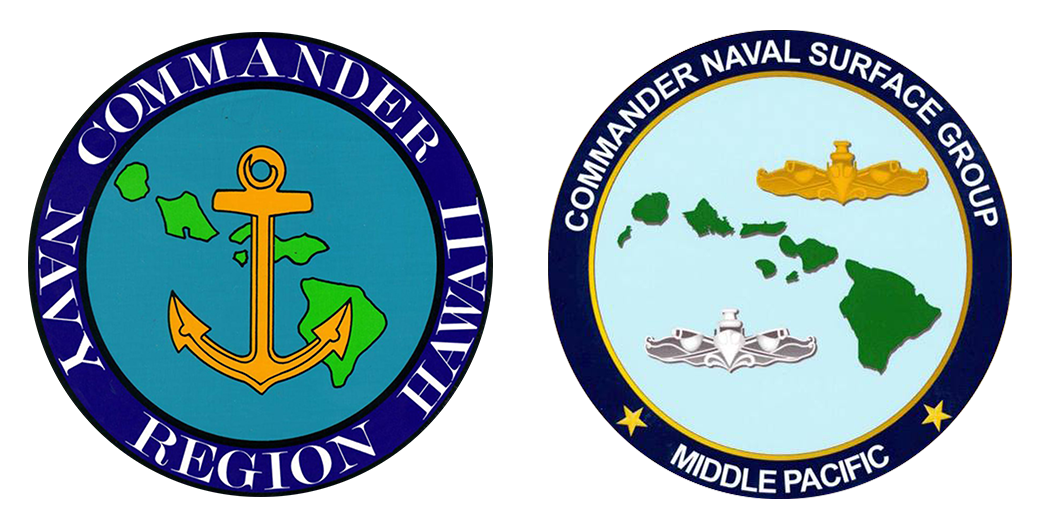
JOINT BASE PEARL HARBOR-HICKAM, Hawaii – The Navy is working with the Hawaii Department of Health (DOH) to remediate detections of lead in three sinks on the Joint Base Pearl Harbor-Hickam water system.
On April 6, the Navy notified the DOH that it had detected elevated levels of lead from a home in Onizuka Village in Zone D2 (Hickam, Hale Na Koa, Officer Field Area, Onizuka Village).
On April 8, the Navy notified the DOH that it had detected elevated levels of lead from an indoor staff sink at an administrative building at Pearl Harbor Kai Elementary School, located in Zone D1 (Hale Moku, Hokulani), and also at an indoor staff bathroom sink at Moanalua Preschool/Kama‘aina Kids, located in Zone F1 (NEX, Moanalua Terrace).
These three exceedances, in addition to a previously reported exceedance, are the only four out of 219 samples taken to date in zones D1, D2, and F1 while conducting long-term monitoring of the Navy water system on Joint Base Pearl Harbor-Hickam in order to ensure that water from the system remains safe to drink. Under an interagency-approved flushing and sampling plan, the Navy water system is now in a two-year period of long-term monitoring. This includes testing about 6,000 more samples from roughly 55% of residences and other facilities on the system for more than 60 different contaminants.
“We continue to focus on the safety of our community and those on our water system. We are working with the Hawaii Department of Health to ensure the water is safe,” said Rear Adm. Tim Kott, commander, Navy Region Hawaii. “When we get an exceedance, we notify the Department of Health and take immediate steps to analyze and sample to determine the source. We will continue these deliberate and important steps, working with our partners.”
The initial sample at the residence in Onizuka Village was taken March 28 from an indoor sink. The sample tested positive for lead at a level of 15.5 parts per billion (ppb). Under the federal Safe Drinking Water Act, the Lead and Copper Rule action level for lead is 15 ppb. This was the only exceedance reported in Zone D2 out of 111 total samples taken in March and April 2022.
The Navy immediately contacted the residents and advised them not to consume the water, but that all other uses were acceptable, and began providing bottled water for consumption.
The Navy determined, in coordination with DOH, that the next steps were to secure the sink from use and sample all fixtures in the house in order to determine the source of the elevated lead level. The additional sampling was conducted April 8. The Navy is awaiting validated sampling results.
The sample at the Pearl Harbor Kai Elementary School was taken April 1 from an indoor staff bathroom sink at an administrative building. The sink was not regularly used by children and had been secured since a March 16 sample showed an exceedance of mercury (see press release). The April 1 sample, taken after the school replaced the faucet, tested positive for lead at a level of 26.3 ppb. Under the federal Safe Drinking Water Act, the Lead and Copper Rule action level for lead is 15 ppb. This lead exceedance was the only one reported out of seven samples collected at the school, and the only one reported out of the 45 samples collected from Zone D1.
The school principal was notified April 12 of the lead exceedance, as soon as the Navy received validated sample results indicating elevated levels of lead. The sink remains secured from use; the Navy is re-sampling the sink and will notify the school when validated re-sampling results are received.
The initial sample at Moanalua Preschool/Kama‘aina Kids was taken in March from an indoor staff bathroom sink. The sink was not regularly used by children. The sample tested positive for lead at a level of 34.6 ppb. Under the federal Safe Drinking Water Act, the Lead and Copper Rule action level for lead is 15 ppb. This exceedance was the only one reported out of the six samples collected at the school, and the only one reported out of the 63 samples collected from Zone F1.
The school principal was notified April 8, as soon as the Navy received validated sample results indicating elevated levels of lead. The sink was immediately secured from use.
The sink will remain secured as the Navy re-samples the sink and receives validated re-sampling results.
The DOH has a fact sheet for corrective actions people can take to reduce their exposure to lead in their drinking water at: https://health.hawaii.gov/heer/files/2021/06/WIIN-Corrective-Action-Factsheet.pdf.
For more information on long-term monitoring of the Navy water system, see https://jbphh-safewaters.org.